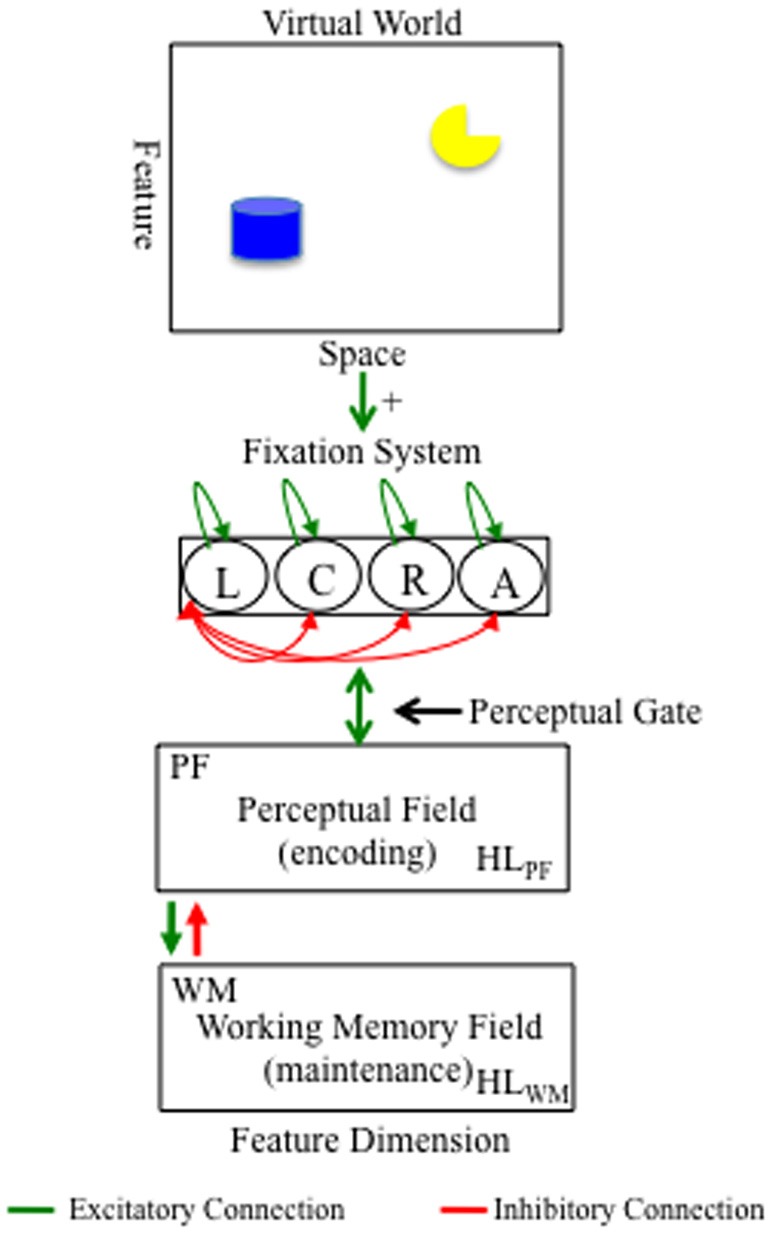Figure 1.

DNF model architecture. At the top is a virtual world at which the model looks. The virtual world consists of two objects at left and right locations distributed over a continuous feature dimension (e.g., color). The presence of items at left and right locations bias the fixation system to look at those locations (see green arrow from space to fixation system). The fixation system interacts in a winner-take-all fashion such that fixating a location suppresses fixation to all other locations (see red arrows between nodes). Fixating a location acts like a perceptual gate into the cognitive system, which consists of a perceptual field (PF) and working memory (WM) field. PF and WM are reciprocally coupled to a shared layer of inhibitory interneurons (Inhib; not show). Activity in PF supports fixation (green bi-directional arrow between PF and fixation). Activity in WM suppresses PF via a strongly tuned connection from WM to Inhib (red arrow from WM to PF). Activity in PF and WM are influenced by activity in Hebbian layers, HLPF and HLWM, respectively, which accumulates over learning and facilitates encoding in PF and memory formation in WM.
